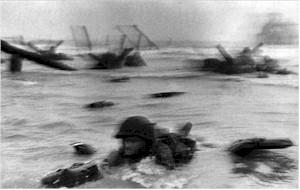Portraiture has developed and evolved since the begining when Royalty has Artists paint them and their family. In essence the the reaon for the subjects wanting them taken is the same, to show wealth and fame. But now instead of the Royals it appears to be the famous wanting to show how divine they are. Photographers such as Tony Vaccaro see through this. He says celebrities are pre-packed, fake. You need to strip them down to who they really are. Otherwise theese portraits are a lie.
Pablo Picasso hired Vaccaro to take portraits of him. When he first started the shoot Picasso was posing in ways as such it wasn't him. In essence he was pretending to be some he was not, Vaccaro pretended his camera was not working and Picasso automatically relaxed at this moment Vaccaro striked getting a picture true to him self and Picasso.
The idea of a portrait being a lie was something Diane Arbus explored. She was hired by the Matthaei family to have portraits done during the christmas period. The being a very well to do, high staus family got this done annually. The pictures Diane took were almost a reflection of her own insecurities as she grew up in simular circumstances, her picture of the youngest daughter Marcella is haunting and expressive especially in the eyes.
Theese portraits show the truth. The cracks in the family and in the generation of the time.
Where Portraits used to very much be abou the person infront of the camera, about their life and the style they had it has now transpired more into the person behind the camera, why they took the picture that way and what it meant. With Diane Arbus it was very much that she pictured mostly people on the "fringe of society" those we we'rnt used to seeing in the mainstream such as the disabled, homosexual,dwarfs,giants,nudists,transvestites, circus performers and transgendered people.
Such as in the photobelow.
By taking these photos she showed that she herself was more interested the people in theese photos than those such as celebrities and those of high status who used to be the focus of portriture.
Wednesday 28 September 2011
Wednesday 21 September 2011
Photo Journalism part two, War and Photography.
There are three prominant photographers who put their lives on the line to photograph the wars going on a the time.First is Robert Capa who with, among others, the french photographer Henri Cartier-Bresson formed Magnum Photos. He went front line during the Second World War in London ,North Africa, Italy, the Battle of Normandy on Omaha Beach and the liberation of Paris.His most famous pictures were those of the D-Day landings:of which only one of the four films sent back to publishing magazine "Life" surviveed after a dark room incident. He thought War was romantic a sentiment not shared by the Photographer/Soldier Tony Vaccaro who stayed in Germany in the aftermath of the war to document the reconstruction of the country after it's traumatic time. Capa did not, he then went to Hollywood to film a Hitchcock film.
is best known for his photos taken in Europe during 1944 and 1945 and in Germany immediately after World War 2. After the war, he became a renowned fashion and lifestyle photographer for American magazines. He thought war was anything but romantic after expiriencing it in is most raw form and seeing the shear destruction, pain and aftermath such as in the picture below.
Wednesday 14 September 2011
Photo Journalism Part One
Henri Cartier-Bresson was a french photographer who considered himself as more of an artist than a photographer. He was really the leading man of Photographic Journalism. But also the God Father of the "Decisive moment" He was described as a stalker or persuer of theese moments. One of which is now considered one of the most iconic photos in history.
His image 'The Decisive Moment.' is seen not as a lucky shot but a moment whe all the elements came together at the right moment were captured on camera. His 'theme' as such carries on through out his work such as with his picture "One step at a time" where he captures a man on a bicycle passing as he stands at the top of a winding stairwell.
Theese pictures are not set up or organised, it was is more of a matter of looking through the lense and pressing the shutter at the right time and capturing that moment. Heri's are considered iconic. Even the objects seeming to have mean, such as the broken hoop in 'the decisive moment.'
His image 'The Decisive Moment.' is seen not as a lucky shot but a moment whe all the elements came together at the right moment were captured on camera. His 'theme' as such carries on through out his work such as with his picture "One step at a time" where he captures a man on a bicycle passing as he stands at the top of a winding stairwell.
Theese pictures are not set up or organised, it was is more of a matter of looking through the lense and pressing the shutter at the right time and capturing that moment. Heri's are considered iconic. Even the objects seeming to have mean, such as the broken hoop in 'the decisive moment.'
Subscribe to:
Posts (Atom)




